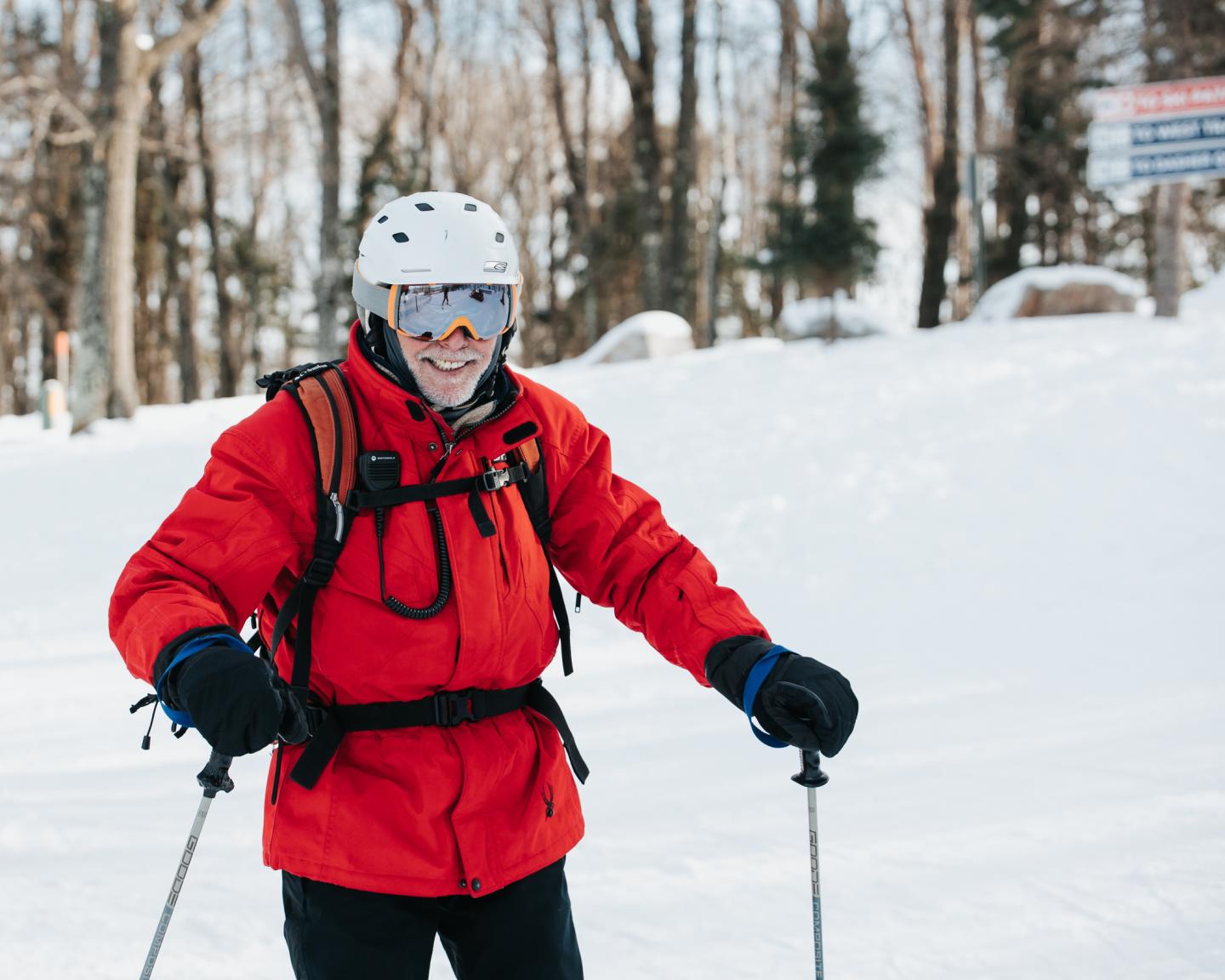Safety

SKI & SNOWBOARD SAFETY TIPS
Skiing and riding can be enjoyed in many ways. At ski areas you may see people using alpine, snowboard, telemark, cross country, and other specialized equipment, such as that used by adaptive skiers and riders. Regardless of how you decide to enjoy the slopes, always show courtesy to others and be aware that there are elements of risk in skiing and riding that common sense and personal awareness can help reduce. Observe the YOUR RESPONSIBILITY CODE listed below and share with other skiers and riders the responsibility for a great on-hill experience.
SAFETY, SIGNAGE & EQUIPMENT
Below please find a list of safety topics, knowledge and suggestions for visiting Granite Peak and safely enjoying your time on the slopes!
YOUR RESPONSIBILITY CODE
- Always stay in control. You must be able to stop or avoid people or objects.
- People ahead or downhill of you have the right-of-way. You must avoid them.
- Stop only where you are visible from above and do not restrict traffic.
- Look uphill and avoid others before starting downhill or entering a trail.
- You must prevent runaway equipment.
- Read and obey all signs, warnings, and hazard markings.
- Keep off closed trails and out of closed areas.
- You must know how and be able to load, ride and unload lifts safely. If you need assistance, ask the lift attendant.
- Do not use lifts or terrain when impaired by alcohol or drugs.
- If you are involved in a collision or incident, share your contact information with each other and a ski area employee.
TRAIL SIGNAGE - WHAT DOES IT MEAN?

Here’s what they mean:
- Green Circle: Easier
- Blue Square: More Difficult
- Black Diamond: Most Difficult
- Double-Black Diamond: Most Difficult, use extra caution
- Orange Oval: Freestyle Terrain
You’ll find them on trail maps and posted on signs on the mountain. The same trail symbols are used at every resort in the country, but as Albert Einstein must have said, “It’s all relative.”
The trail ratings are consistent within each resort. So all the “Greens” at a ski area will be about the same difficulty, as will the “Blues” and the “Blacks.”
CHAIRLIFT KNOWLEDGE
Chairlifts have been around since skiing began. Here we have three high speed detachable chairlifts Comet, Dasher & Cupid. These chairs will detach from the haul rope in the load and unload area to assist guests getting on and off.
You need to be ready to go once you step into the terminal area. Please make sure all your children and party is complete and ready. Loading is the most important part of riding a lift. As soon as you are situated on the lift and sitting with your back against the chair back lower the safety bar. Lift rides are short so please this is the time that no fooling around should occur! (Adults & Kids!)
Before you ride a lift during your first few days, make sure you can handle the trails at the top. Granite Peak is steeper at the top and mellower down low. Beginners should stick to the Santa and Blitzen Lifts.
- NOTE: All Beginners NEED TO EXIT at the BLITZEN MID-STATION UNLOAD! Expert terrain is at the top!
Some skiers think they can improve by skiing tough terrain when their skills aren’t up to that level, but that’s a good way to get hurt. Instead, take a lesson.
Check your trail map and make sure the trail symbols off of that lift fit your ability. If you have any questions or need directions, go talk to a lift attendant or anyone in a resort uniform.
- “What’s the easiest way down?”
- “Where’s the closest groomed trail?”
- “What’s the capital of New Guinea?” :-)
- They want you to have fun nearly as much as you do.
HELMETS - USE THEM!
Helmets can help mitigate head injuries on the slopes. Bonus: they also keep your head warm! Not all ski areas require helmets, but it is a good idea to outfit your child with one, and wear one yourself. While wearing a helmet is a personal choice, you would be setting a good example for the young ones in your family if you chose to wear one while skiing or riding.
ADDITIONAL SAFETY ITEMS
- Snowboarders should always wear wrist guards.
- If you’re new to skiing or snowboarding, consider taking a lesson—it’s the best way to learn safety on the mountain.
- Always carry a ski area map and any needed medications such as an inhaler or insulin or snack.
- Maintain your equipment—keep the bindings clean and functioning.
- Wear proper clothes. Wool socks are the best to keep your feet warm. Cotton is not a good material for winter sports.
- Protect your eyes with goggles and put on a hat—or, better yet, a helmet. You lose most of your body heat through your head.
- Stay sober! Just like driving a car, alcohol and drug use can inhibit your ability to control yourself!